Nasi Goreng is Indonesian fried rice and, unsurprisingly, also one of Indonesia’s national dishes. It’s simultaneously sweet, spicy, and savory and typically finished with a fried egg on top! This recipe is quick, easy, and satisfying.
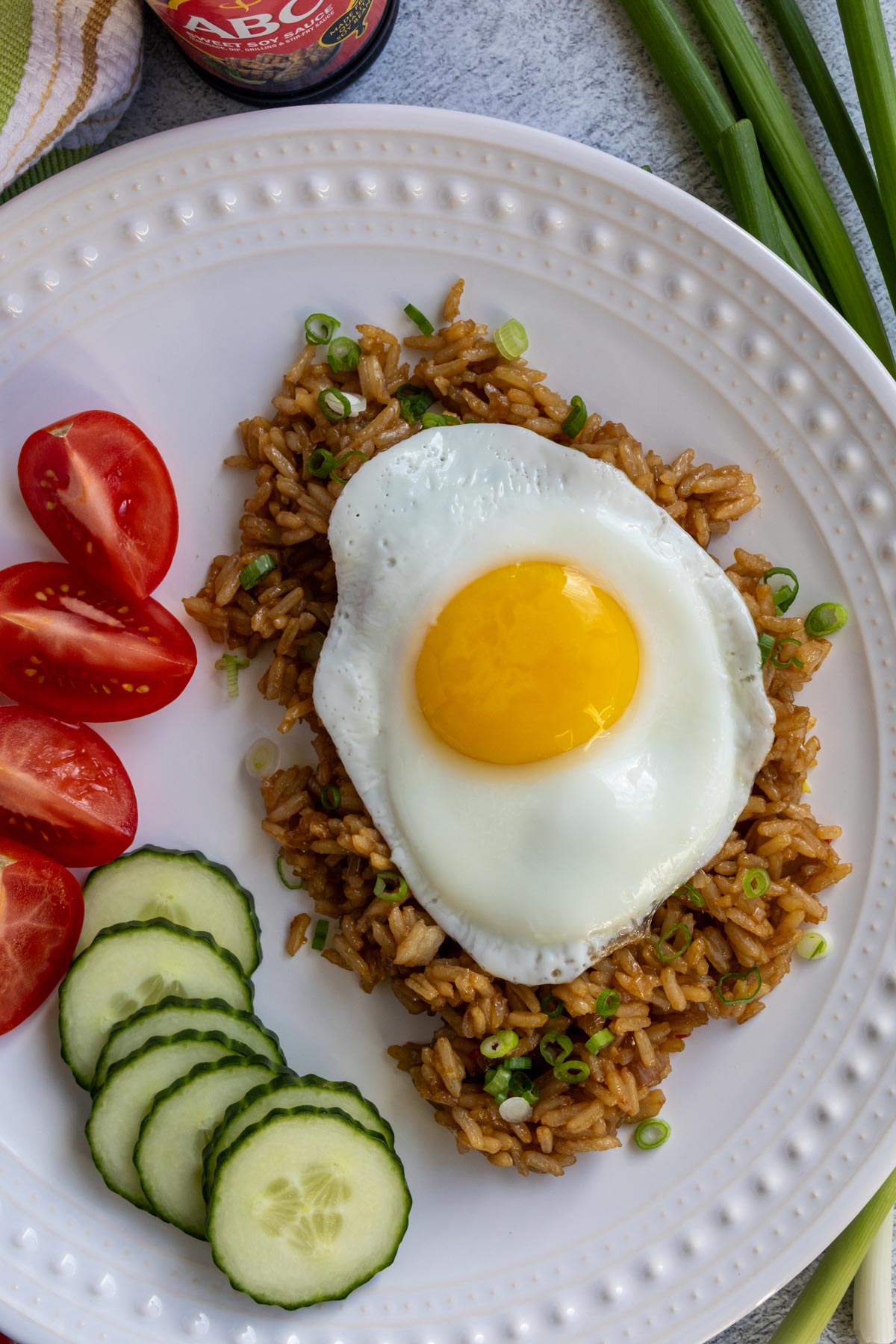
(This post was originally published in October 2016, but was updated with a new recipe, new photos and additional content in 2024).
Although nasi goreng is one of Indonesia’s national dishes, it’s also very popular in Malaysia and Singapore. The name itself translates to “fried rice” (“nasi” = rice, “goreng” = fried). There is no single recipe for nasi goreng, and its preparation can range from household to household.
In its most basic form, nasi goreng is made with cold leftover rice from the day before, seasoned with sweet soy sauce (kecap manis) and whatever leftovers and spices the cook has on hand. It's often topped with a fried egg and served for breakfast. It’s also a very popular street food.
Traditional nasi goreng is comprised of three basic components: the main ingredients (e.g. rice, egg, oil), the seasonings (e.g. garlic, shallot, kecap manis), and the condiments to serve it with (e.g. sliced cucumber and tomato).
It’s a very versatile and customizable dish. You can definitely make changes to the basic recipe to use up ingredients you have on hand, add some additional protein, or simply tweak it to your taste. This simple Indonesian fried rice recipe makes for a quick and easy weekday meal.
Ingredient notes
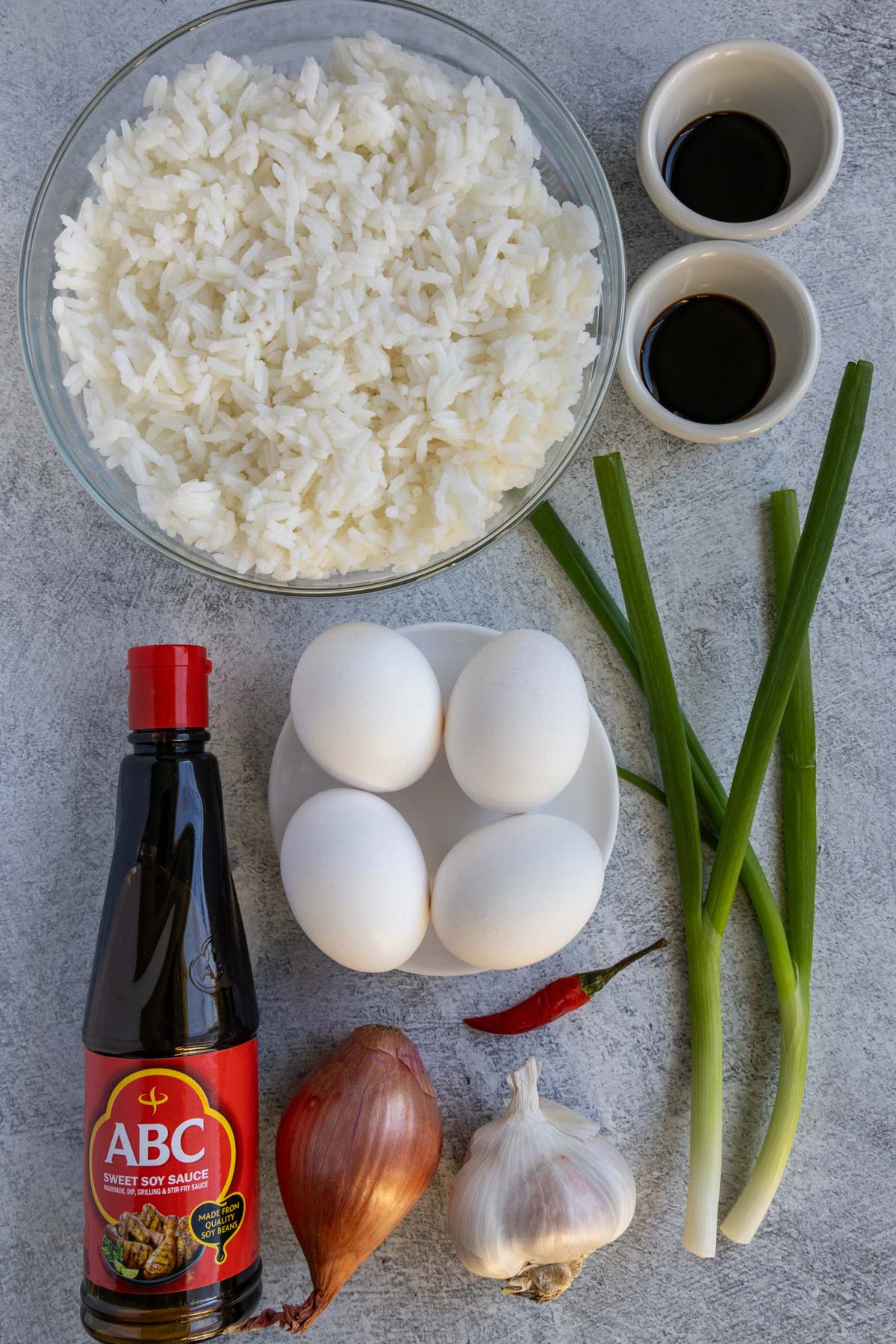
- Rice: I prefer using jasmine rice (either white or brown) for all my fried rice dishes.
- You must cook the rice in advance, at least a day ahead of time.
- Once the rice is cooked, I like to spread it out on a sheet tray to cool and dry out. The key to good fried rice is to have relatively dry cooked rice.
- Note that 1 cup dry jasmine rice (white or brown) will yield about 4 cups cooked.
- Kecap Manis: One of the key ingredients for nasi goreng is kecap manis, or Indonesian sweet soy sauce. If you can’t find kecap manis to purchase it, you can make a variation yourself for this recipe. To do so combine three parts honey, maple syrup, or brown sugar with one part soy sauce.
- Chiles: Nasi goreng typically uses Thai bird’s-eye chiles or other small spicy chiles.
- Red Thai bird's-eye chiles are extremely spicy. They're 50,000 to 100,000 Scoville heat units compared to a jalapeno which is 3,500 to 10,000 SHU. Be very gentle when handling them and wear gloves!
- It can be difficult to find fresh Thai bird’s-eye chiles in many grocery stores. I found a bag of frozen ones at an Asian market and use those! Their flavor is the same although the texture is softer from freezing, but once you mince them it’s not noticeable.
- You could use a different type of chile if you prefer, or in a pinch you could add some chile paste such as sambal oelek or sriracha.
- Remove the seeds from the chile for a slightly milder result (I usually do), or omit the chiles entirely if you can’t handle the spice.
- Shrimp Paste or Fish Sauce (optional): Terasi (Indonesian shrimp paste) is a common ingredient in nasi goreng and adds umami flavor. It may not be easy to find. If it’s not something you plan to use in other dishes, it might not be worth purchasing just for this. Alternatively you can add some fish sauce for a pungent, umami component. If you’d prefer to make a vegetarian Indonesian fried rice, you can leave this out entirely.

How to make it
Heat oil in a large nonstick skillet or wok over high heat. Add the shallots or onion and stir-fry until it starts to soften, about 1 to 2 minutes. Next add the garlic and chiles and stir-fry for another 30 to 60 seconds, making sure the garlic doesn’t burn (lower the heat if needed).
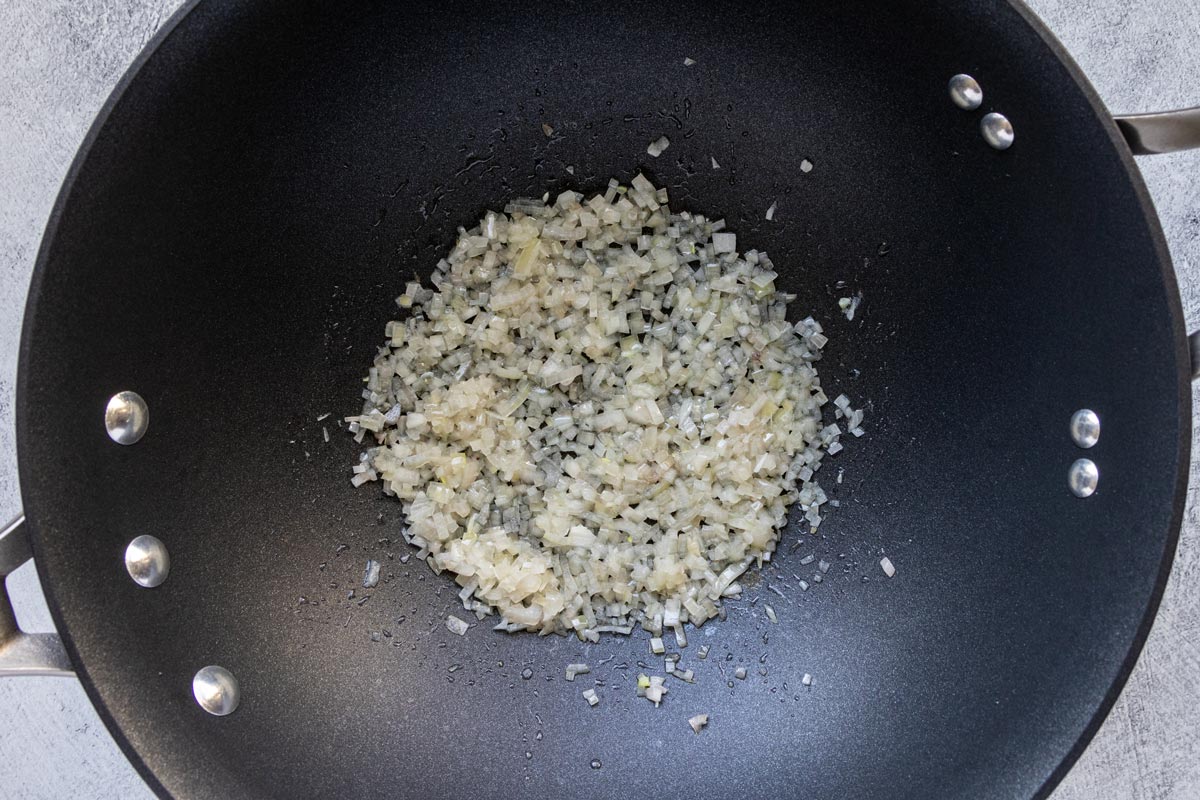
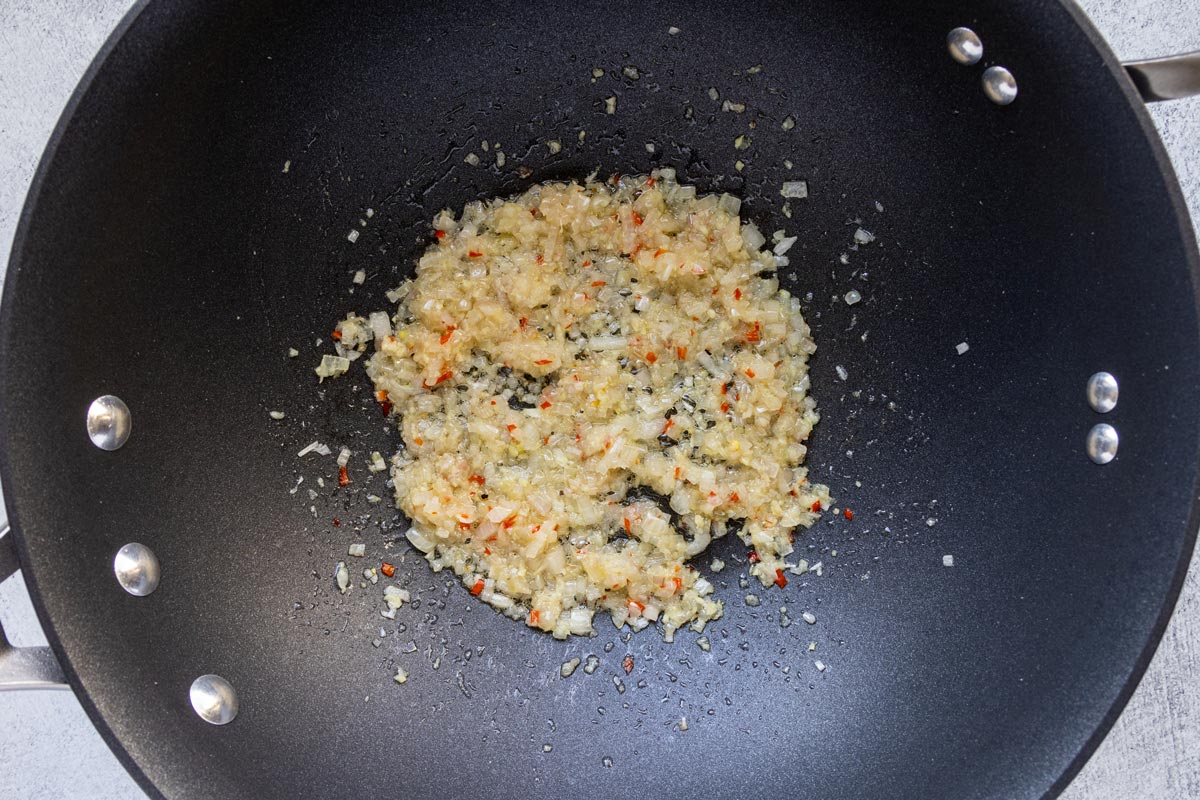
Add cold cooked rice, breaking it up a bit with the side of a wooden spoon and add the kecap manis, soy sauce, and shrimp paste or fish sauce, if using.
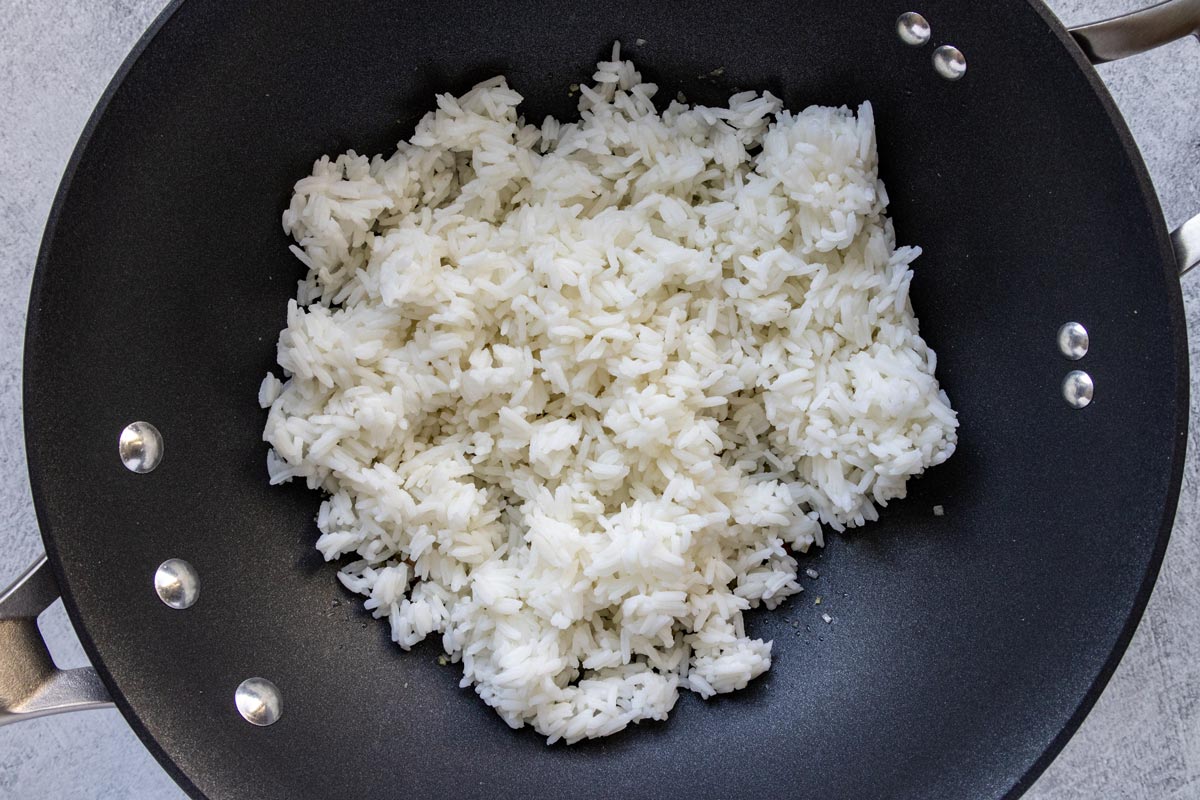
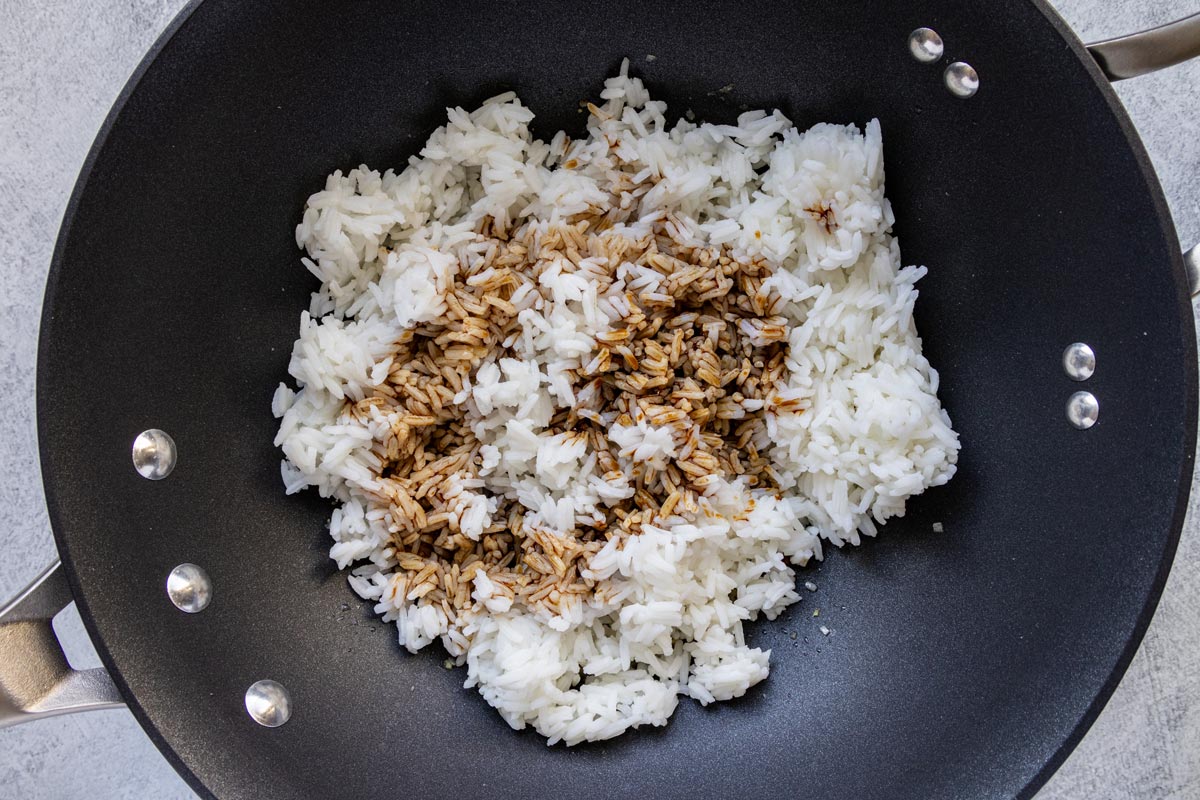
Stir-fry the mixture constantly for 2 to 3 minutes to reheat the rice and allow it to absorb all the flavors.
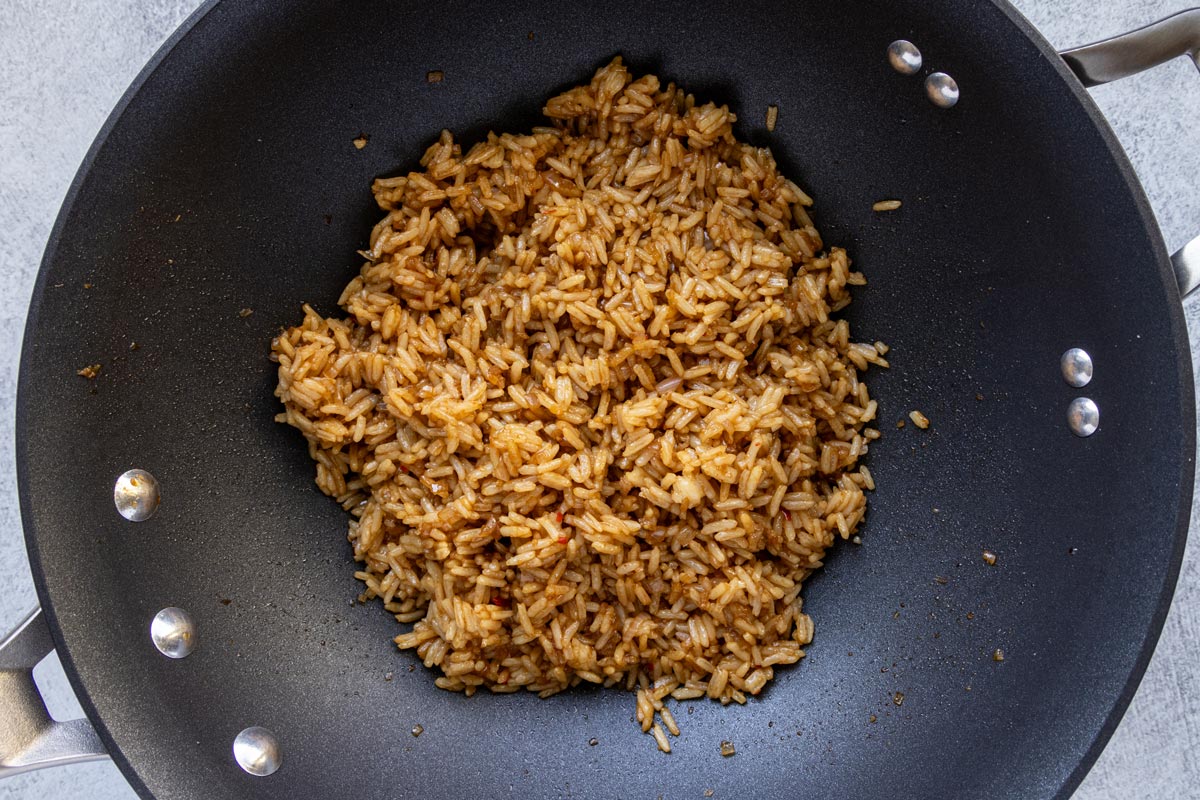
Divide the nasi goreng onto 4 plates and top each portion with a sprinkle of sliced scallions and a fried egg. Serve cucumber slices and tomato slices or wedges on the side, if desired.
Please scroll to the bottom of the post for the full recipe (in a printable recipe card) including ingredient amounts and detailed instructions.
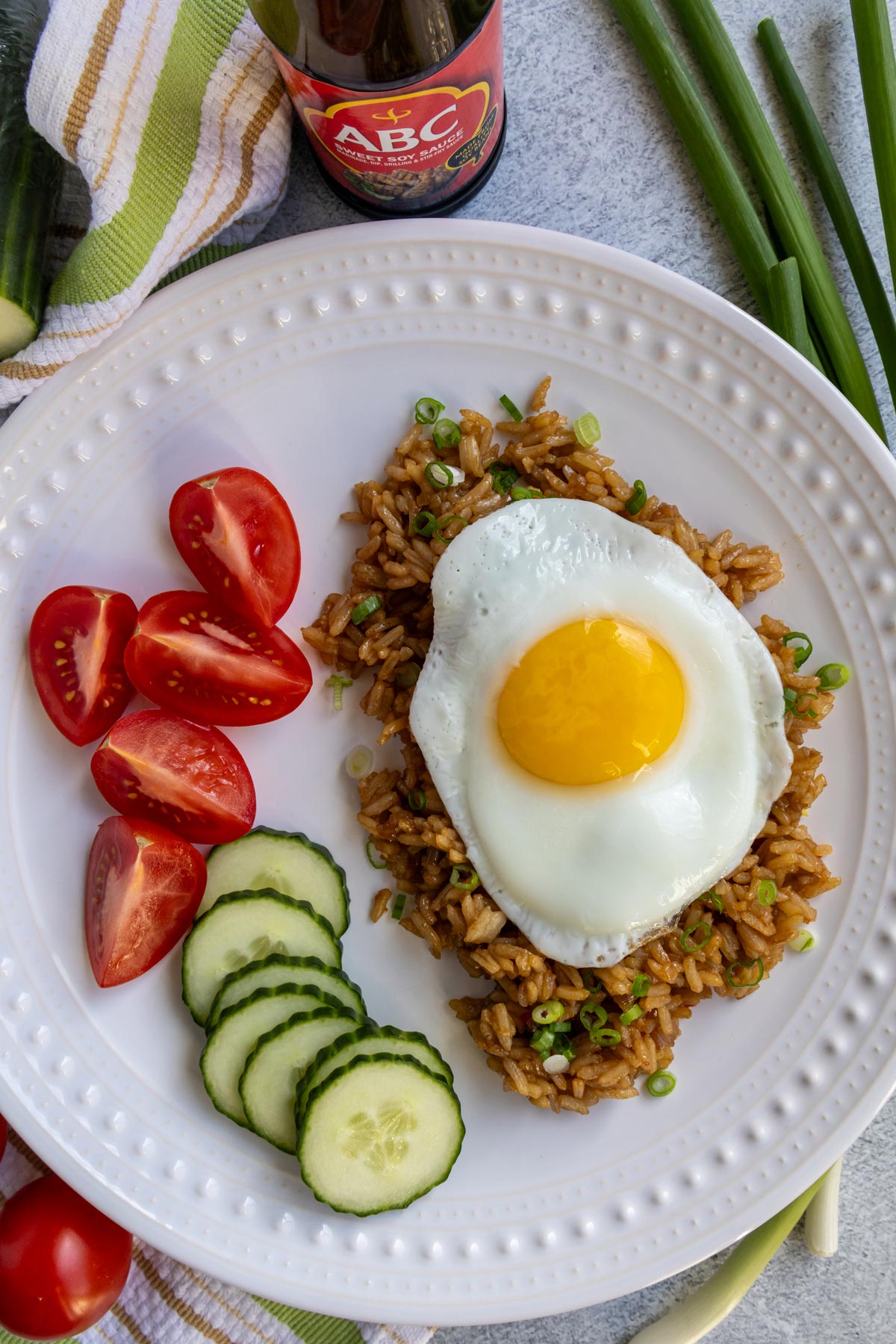
Expert tips and FAQ
This recipe as written is perfect for breakfast! If you’d like to serve Indonesian fried rice for dinner, consider adding some other proteins. Try adding sliced or diced chicken or pork, ground pork, or shrimp. You can cook these in a little oil first and proceed with the recipe. In the case of the shrimp, I’d remove them once they are cooked and then add them back later just to make sure they don’t overcook.
Store leftover nasi goreng in the refrigerator for 4 to 5 days. Reheat in the microwave or in a nonstick skillet or wok until heated through.
This is how I fry my eggs:
- Add a little oil or butter (or oil spray) to a small nonstick skillet over medium heat.
- Add the egg and season with salt and pepper as desired.
- Lower the heat and cover the pan.
- Cook to your liking.
Lowering the heat and covering the pan helps the egg cook more gently and evenly, and allows the top of the egg cook as well without having to flip it. I hate the uncooked albumen around the yolk, so I like to let the top essentially steam to at least cook the edges around the yolk. Just keep an eye on it so the yolk doesn’t overcook.
Using warm, just-cooked rice for fried rice yields soggy, sticky, clumpy rice. Cooking the rice in advance and giving it time to dry out will result in the optimal texture in your fried rice. This is also why I recommend spreading the cooked rice out on a large plate or tray so it has more surface area to dry out better as it cools.

Other recipes you may like
- Mie Goreng (Indonesian Stir-Fried Noodles)
- Arroz Chaufa (Peruvian Fried Rice)
- Chinese Spicy Vegetable Fried Rice
- Authentic Thai Pineapple Fried Rice
Tried this recipe? Please leave a star ⭐️⭐️⭐️⭐️⭐️ rating in the recipe card below and/or a review in the comments section further down the page. You can also follow me on social media on Facebook, Instagram, and Pinterest!

Nasi Goreng (Indonesian Fried Rice)
Ingredients
- 2 tablespoons vegetable oil or other neutral oil
- 1 large shallot or small onion or 2 small shallots finely chopped
- 4 cloves garlic crushed or minced
- 1 to 2 red Thai bird’s-eye chiles minced
- 4 cups plain cooked rice (at least 1 day old, cold)
- 3 tablespoons kecap manis (Indonesian sweet soy sauce)
- 1 tablespoon light (regular) soy sauce
- 2 teaspoons terasi (Indonesian shrimp paste) or fish sauce (optional, but recommended)
To serve:
- 2 scallions sliced
- 4 large fried eggs cooked sunny-side up or over easy
- Cucumber slices (optional)
- Tomato slices or wedges (optional)
Instructions
- Heat the oil in a large skillet (preferably nonstick) or wok over high heat. Add the shallots or onion and stir-fry until it starts to soften, about 1 to 2 minutes. Next add the garlic and chiles and stir-fry for another 30 to 60 seconds, making sure the garlic doesn’t burn (lower the heat if needed).
- Add the rice, breaking it up a bit with the side of a wooden spoon and add the kecap manis, soy sauce, and shrimp paste or fish sauce, if using.
- Stir-fry the mixture constantly for 2 to 3 minutes to reheat the rice and allow it to absorb all the flavors.
- Divide the nasi goreng onto 4 plates and top each portion with a sprinkle of sliced scallions and a fried egg. Serve cucumber slices and tomato slices or wedges on the side, if desired.
Notes
- Store leftover nasi goreng in the refrigerator for 4 to 5 days. Reheat in the microwave or in a nonstick skillet or wok until heated through.
- This recipe as written is perfect for breakfast! If you’d like to serve it for dinner, consider adding some other proteins. Try adding sliced or diced chicken or pork, ground pork, or shrimp. You can cook these in a little oil first and proceed with the recipe. In the case of the shrimp, I’d remove them once they are cooked and then add them back later just to make sure they don’t overcook.
- Rice: I prefer using jasmine rice (either white or brown) for all my fried rice dishes. You must cook the rice in advance, at least a day ahead of time. Once the rice is cooked, I like to spread it out on a sheet tray to cool and dry out. The key to good fried rice is to have relatively dry cooked rice. Note that 1 cup dry jasmine rice (white or brown) will yield about 4 cups cooked.
- Kecap Manis: One of the key ingredients for nasi goreng is kecap manis, or Indonesian sweet soy sauce. If you can’t find kecap manis to purchase it, you can make a variation yourself for this recipe. To do so combine three parts honey, maple syrup, or brown sugar with one part soy sauce.
- Chiles: Nasi goreng typically uses Thai bird’s-eye chiles or other small spicy chiles. It can be difficult to find fresh Thai bird’s-eye chiles in many grocery stores, but I found a bag of frozen ones at an Asian market and use those! Remove the seeds from the chile for a slightly milder result (I usually do), or omit the chiles entirely if you can’t handle the spice. You could use a different type of chile if you prefer, or in a pinch you could add some chile paste such as sambal oelek or sriracha.
Nutrition
*All nutritional information is based on third-party calculations and should be considered estimates. Actual nutritional content will vary with brands used, measuring methods, portion sizes and more.*






Comments
No Comments